Expert Tips: How to Get Your Garden Furniture Summer-Ready
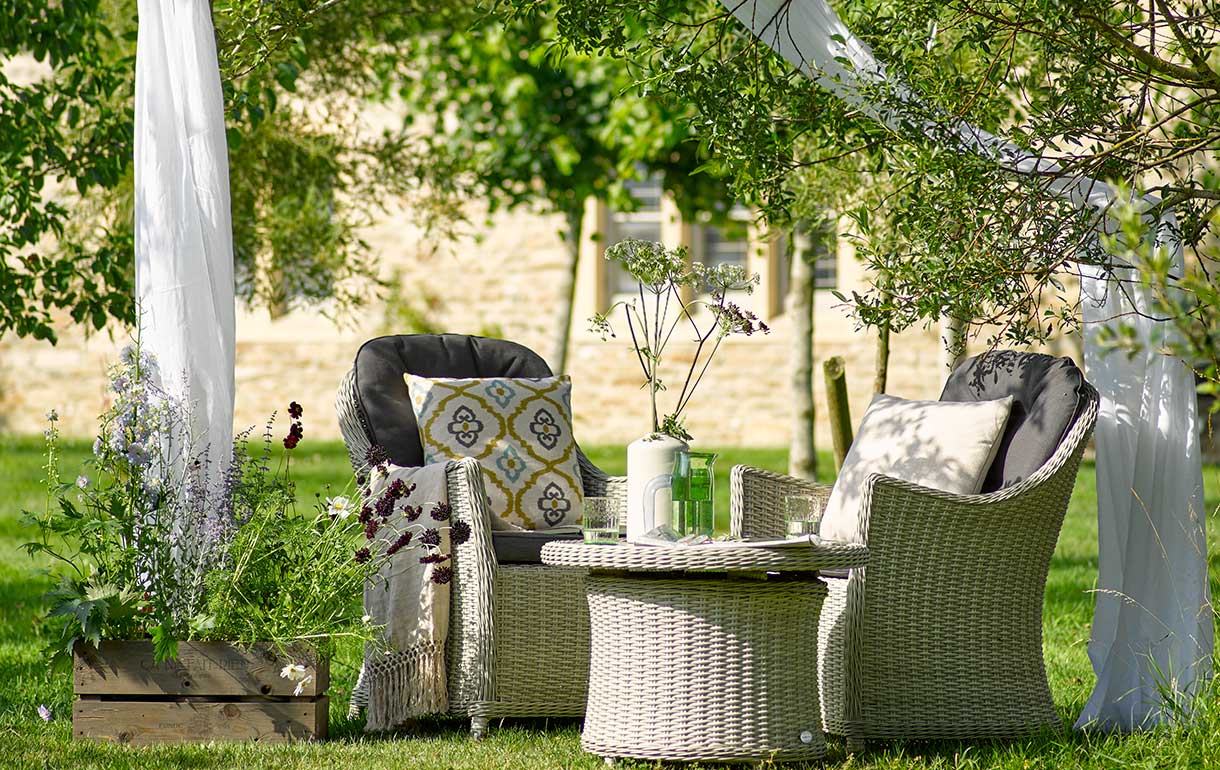
At last, we’ve made it to spring so there’s no time to lose in making sure your garden furniture is summer-ready. You want to be all-set for proper warm weather and getting your summer garden party plans underway.
The very best outdoor furniture brands are durable and easy to keep looking good, whether you choose aluminium, rattan or wood. However, a good cleaning and sprucing up process is important, whatever the material involved.
Here, we focus on the main materials used for garden furniture and the different ways of keeping them in tip top condition.
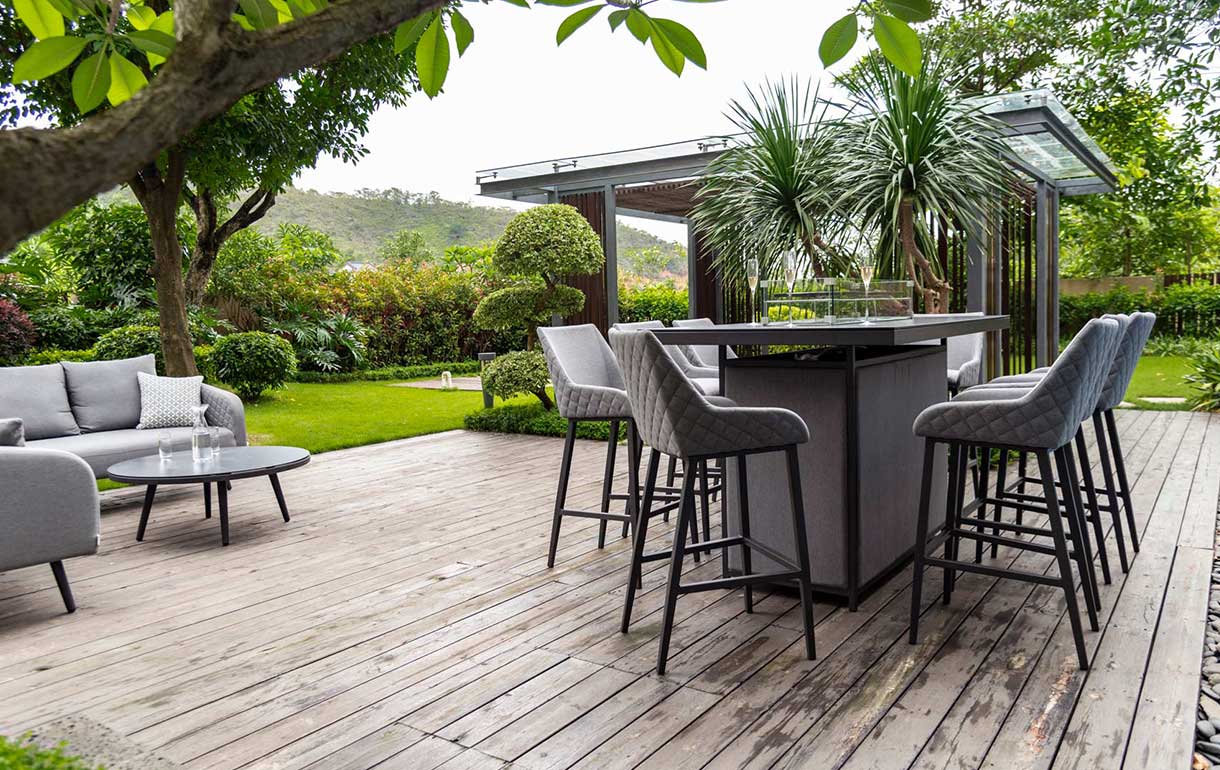
Getting Rattan Garden Furniture Summer-Ready
Rattan garden furniture offers you the best of both worlds: great looks and incredible durability.
Specifically designed to live life outside, PE rattan furniture is made from a UV and frost-resistant polyurethane, which is woven around a naturally rust-resistant aluminium frame.
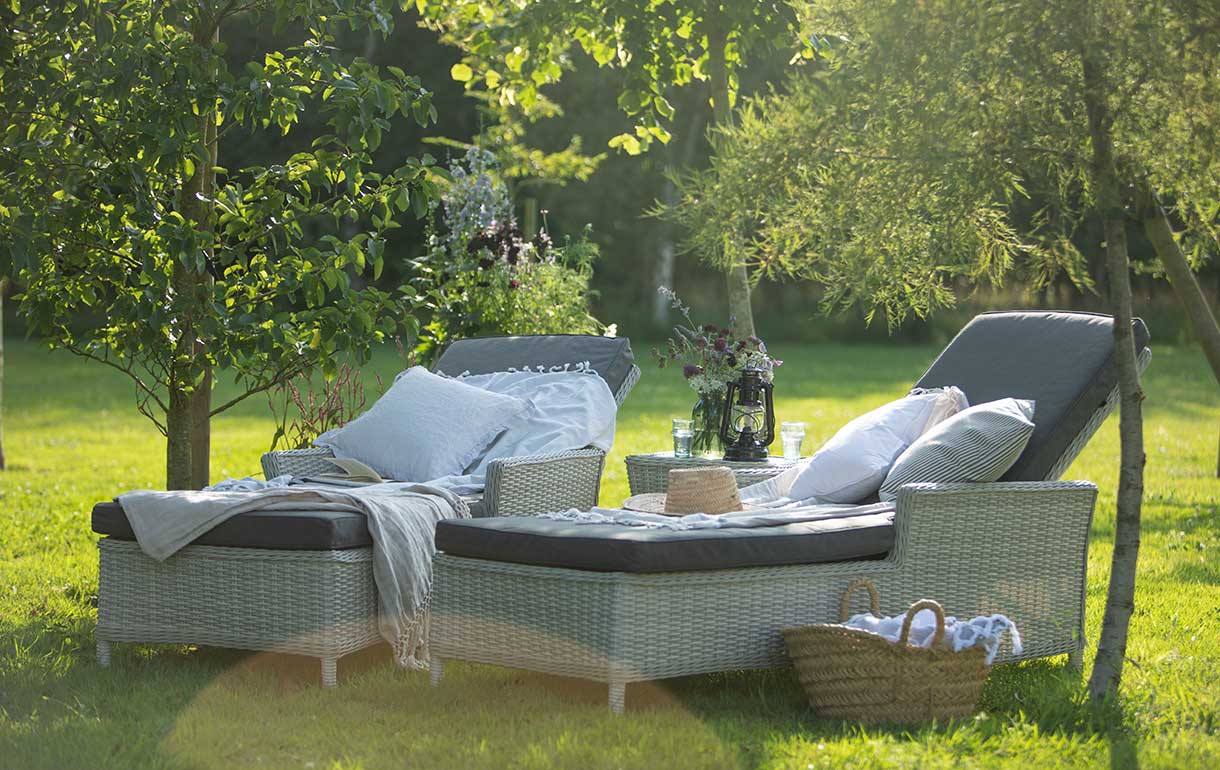
Premium quality rattan garden furniture will usually replicate natural wicker furniture really well - using a variety of weave styles and fibre form to ensure maximum strength. Due to its durability and low maintenance, rattan furniture can be a very, very good investment… but that doesn’t mean it doesn’t need a bit of pampering from time to time!
Things to check before use
Dust and debris, such as food and drink (evidence of last summer’s fun), often get caught in the weave. The UK has a damp climate for the most part, which can mean any food debris that’s gone unnoticed has the potential to go mouldy. It’s always worth checking for mould and mildew on your rattan furniture – even if you store it in a shed or under covers.
It’s also worth checking for any loose parts, especially if your rattan furniture was flat packed/self-assembled. The changes in temperature throughout the year can mean the frame and the bolts holding things together will expand and contract, which can lead to some loosening over time.
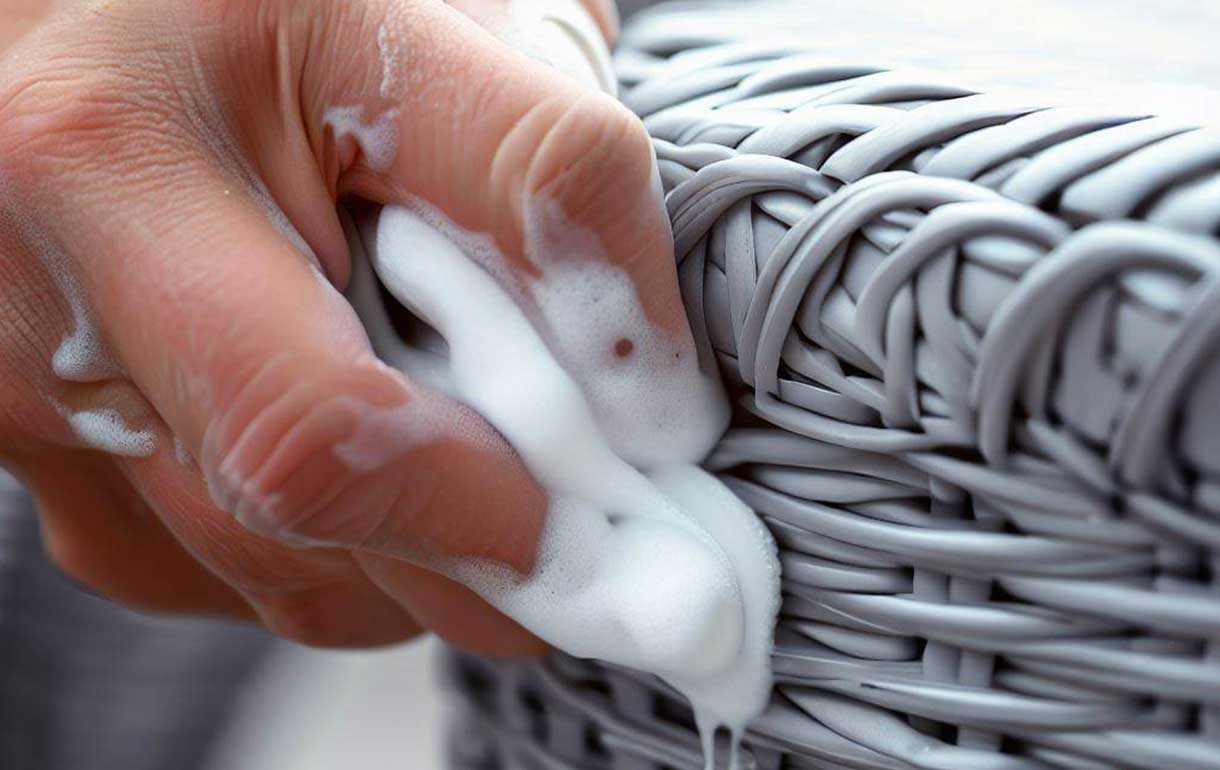
Cleaning PE Rattan Furniture
Generally, very little cleaning is required with PE rattan furniture. But there are a few steps you can take to make sure it continues to look its best:
• Use a vacuum cleaner or stiff brush to remove or loosen bits of dirt and food from the weave. Don’t be too aggressive so you don’t ruin the weave.
• Then, wipe the furniture all over with a soft cloth and warm, soapy water (dish soap will do just fine) to get rid of stubborn stains. Avoid using any bleach or solvent-based cleaners as these could damage the integrity of the fibres and cause irreversible discolouration. If a stain is proving very difficult to remove, then spot cleaning with a small amount of cream cleaner may help.
• Next, rinse your table and chairs with fresh water. By all means use a hose but we wouldn’t recommend using a pressure washer as this could damage the weave.
• Remove excess water with a towel and then leave it to dry off naturally.
• Clean ceramic or glass table tops with soapy water, rinse, dry and polish with a soft cloth or dry newspaper.
Repairing and Treating Rattan Furniture
Rattan garden furniture is robust, so long as it isn’t bashed or subjected to harsh treatment. Improper use, such as sitting on the arms or standing on the weave, can cause the frame to warp or the rattan split.
Ensuring it’s used for its intended purpose will hopefully eliminate any need for repair and you shouldn’t need to carry out repairs beyond evening up the weave occasionally.
However, accidents happen. If your rattan furniture does get damaged, first check out what the manufacturer has to say, they may be able to offer a repair or replacement. If not, then you may be able to buy replacement fibres directly from the manufacturer to ensure a colour match.
These fibres can then be joined to the broken strands using a minimal amount of good quality epoxy resin. Once the join has fully cured (approximately 48 hours), this will allow you to follow the weave pattern to repair the damaged part.
Protecting Rattan Furniture From Damage
There are four easy ways to protect your rattan garden furniture from damage:
1. Clean your rattan furniture at the beginning and end of the summer season.
2. Invest in some good quality garden furniture covers.
3. Use cushions on the seats to protect them from sharp objects such as keys.
4. Be mindful of how you lift it. Lift by the framework rather than dragging your furniture into position as this can damage the legs.
Getting Aluminium Garden Furniture Summer-Ready
Aluminium garden furniture is another good-looking, durable and low maintenance choice. It’s also very lightweight and due to its composition, powder-coated aluminium is unlikely to rust if left outside. But there are things you can do to keep it looking fresh, this is how you get aluminium garden furniture summer-ready:
Things to Check Before Use
As with rattan furniture, check for signs of food, drink, mildew, general dust.
Beyond that, as aluminium is very lightweight, you might be tempted to weigh it down over the winter months if it’s being left outside. If you do this, be sure to check the framework hasn’t distorted due to something heavy resting on it over the winter. If there has been some distortion, it could cause a weakness that leads to a bend or break in the frame when in use so it’s important to try and “square” it up again as gently as possible before using.
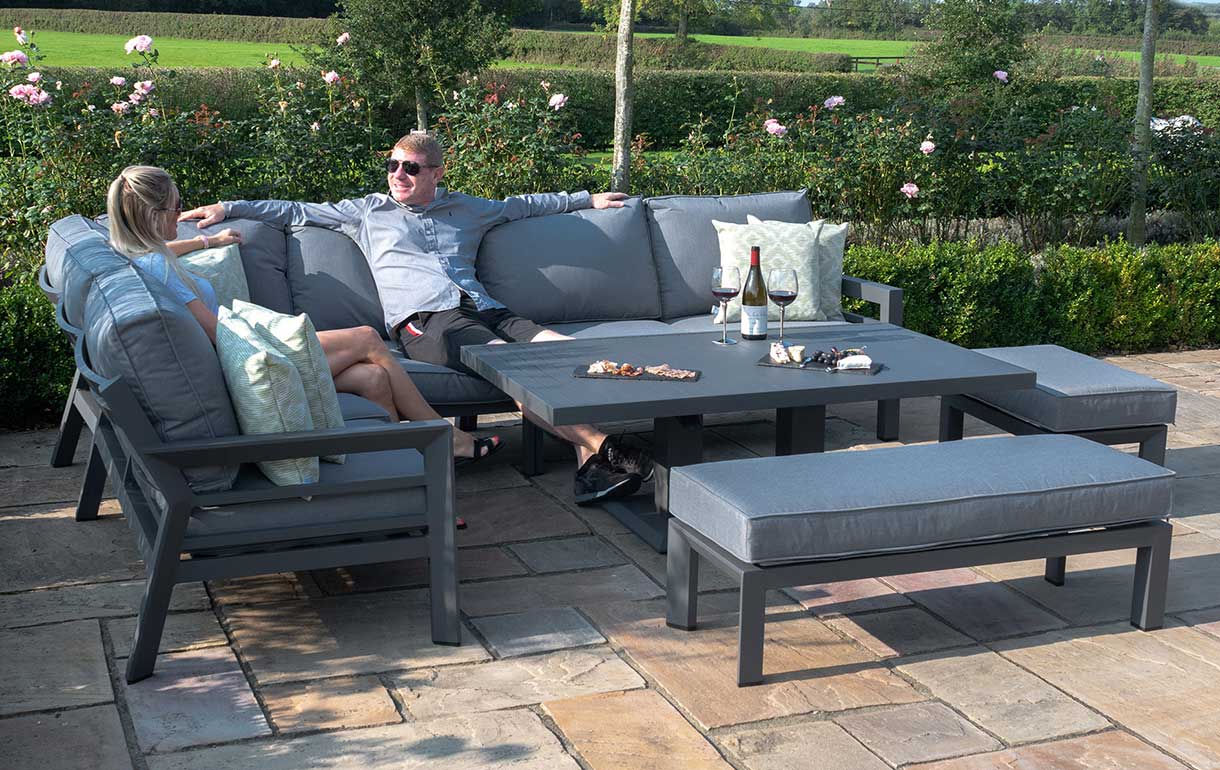
As we mentioned before, the changes in temperature can cause the frames to expand and contract, so it’s always a good idea to check the tightness of any bolts, especially if the furniture was self-assembled.
Also, check for paint chips (these can easily be repaired - see below).
Cleaning Aluminium Furniture
Aluminium garden furniture can be cleaned like any other painted metal surface. Simply clean it with mild soap, a sponge and lots of warm water. Rinse off with clean water and leave to dry. Avoid using any firm bristled brush or scourers as these are likely to affect the finish of the furniture.
Once thoroughly cleaned, you can protect aluminium furniture with a good quality car wax or polish.
Treating and Polishing Aluminium Furniture
The two main reasons for treating and polishing aluminium furniture is because of scratches and dents/chips, and oxidisation.
Chips
Following a period of use, your aluminium furniture might have the odd chip, spoiling its appearance. The feet, in particular, suffer when the furniture is moved around on a stone or gravel patio. If you do get a chip, make sure you touch it up with a suitable metal paint to avoid any further damage to the surface of your furniture and to prevent any water getting through to the base metal.
Don’t confuse chips with the inherent characteristics of the aluminium though, such as an uneven surface and indentations. This is particularly true of the more high end aluminium furniture and is the result of the hand-made process involving sand casting as opposed to machine-driven moulding associated with mass produced furniture.
Oxidation
Some aluminium furniture is susceptible to oxidation, especially from a salt-water atmosphere if you live by the coast. This is where the surface becomes 'pitted' and you get white chalky marks. It doesn’t weaken your furniture but it doesn’t look great.
If you find your aluminium furniture has oxidised over the winter months, Instead of using any harmful chemicals, try applying a simple solution of 1 part white vinegar and 1 part water to neutralise it.
For more serious cases of oxidation, you may need to use a soft brush to get rid of the loose debris followed by a mild detergent cleaner. Then, rinse the cleaner off with warm water, dry the furniture and polish with a protective wax.
There’s no need to use any strong or concentrated cleaning solutions or abrasive cleaners, as these could damage the powdercoating and leave unsightly marks.
Getting Wooden Garden Furniture Summer Ready
Wooden garden furniture is naturally durable, mellowing wonderfully with time, enhancing its appeal.
This is particularly true of teak, a tropical hardwood not easily grown outside of its native south east Asia that’s seeing a spike in popularity of late. Though higher in price than oak or pine garden furniture, teak is incredibly long lasting and much lower maintenance due to its natural water resistance.
Not letting the wood get too dry or too saturated is the key to having many years of pleasure and use out of this traditional style of furniture.
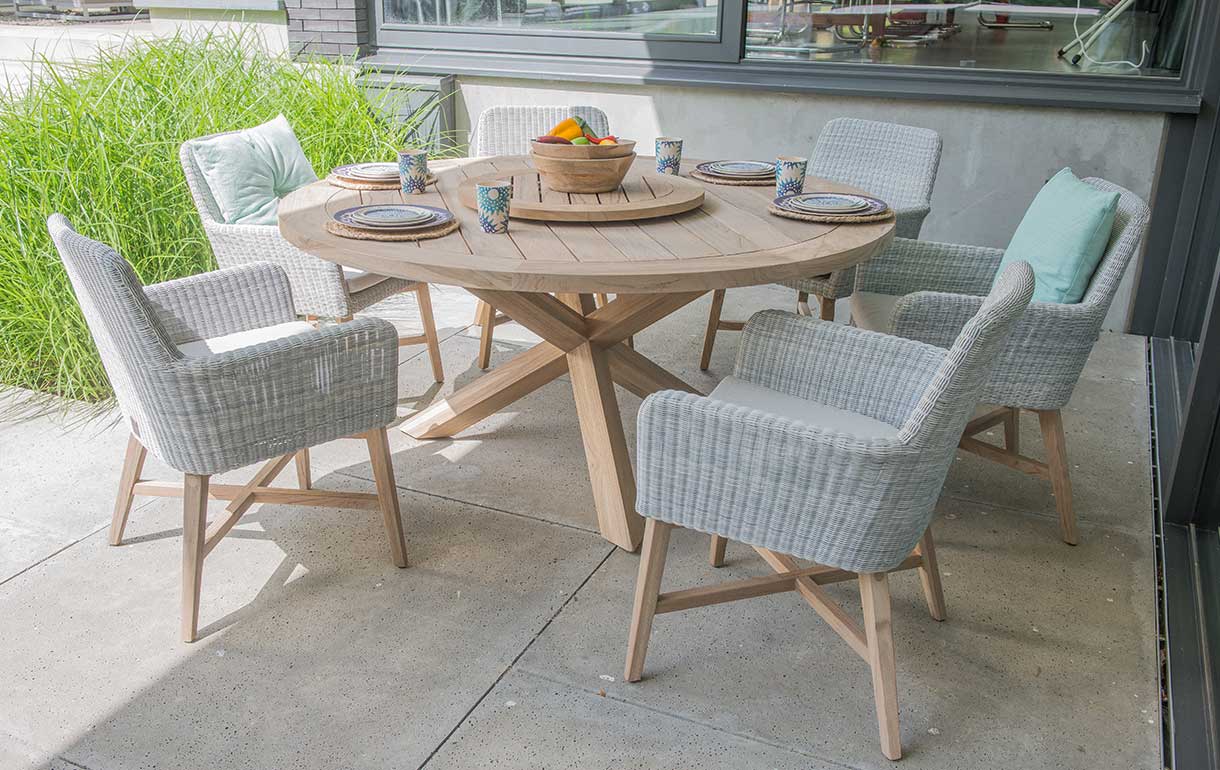
Things to check before use
As with other types of garden furniture, check for food, debris, and especially mildew following a damp winter. If you find there are stains or something funky growing, then a brush and a light sanding may be all that’s needed to return it to its best.
If you find the wood appears quite damp (especially the legs), doing what you can to allow it to dry would be a good idea before use. This may mean raising it on bricks so it’s not sitting in any water, or placing it in a location where it’s not likely to get rained on.
As the weather goes up and down over the colder months, it’s natural for slight splits to occur in the wood as it adjusts to the changing temperatures and humidity levels.
Normally, these splits don’t cause any durability issues, however it’s always worth checking over your wooden garden furniture to ensure these splits haven’t caused any issues with the joints between the pieces.
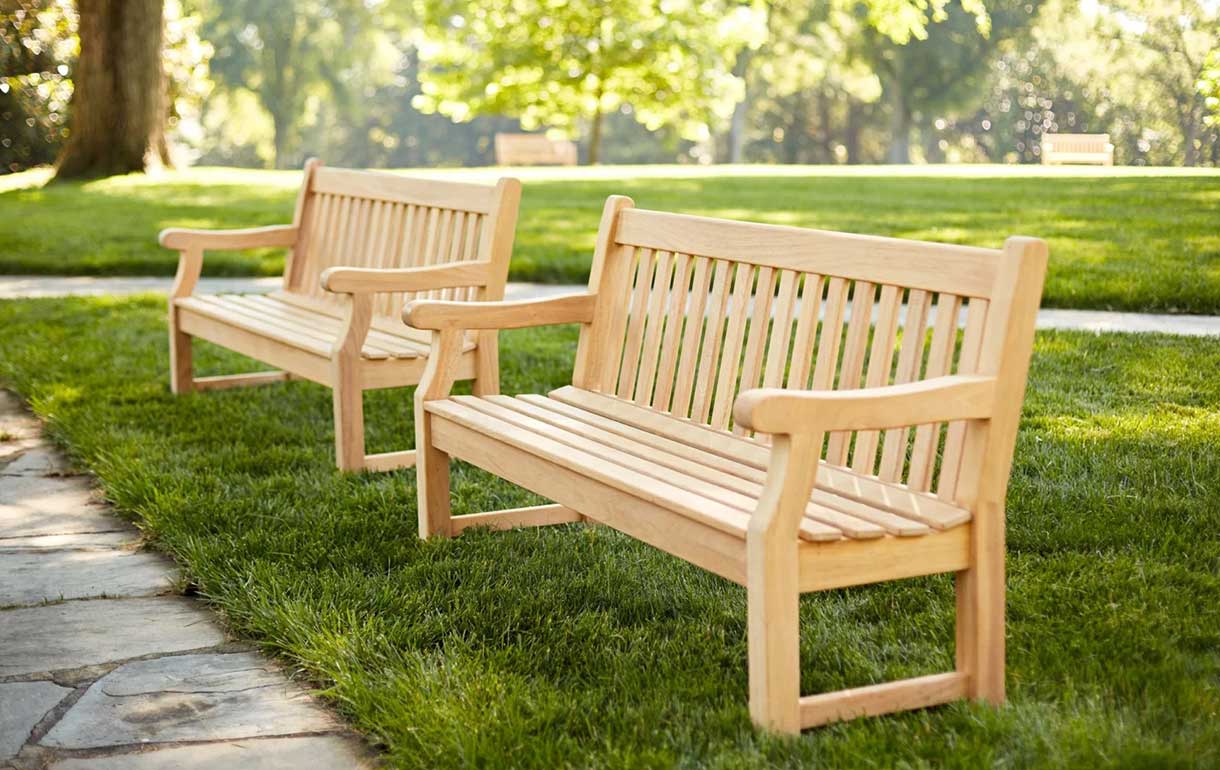
Cleaning Wooden Furniture
As with all furniture, a spring clean to remove built-up dirt and debris is your first task, especially if it’s been left outside. Unpainted wood can stain easily so use a soft bristle brush to remove as much dirt as you can, taking care not to scratch the surface of the wood.
It’s important to avoid harsh chemical detergents on your wooden garden furniture so you don’t damage it or ruin its lovely natural appearance. Just use a mix of water with a mild, diluted soap such as washing up liquid, and remove any dirt with a brush or pan scourer.
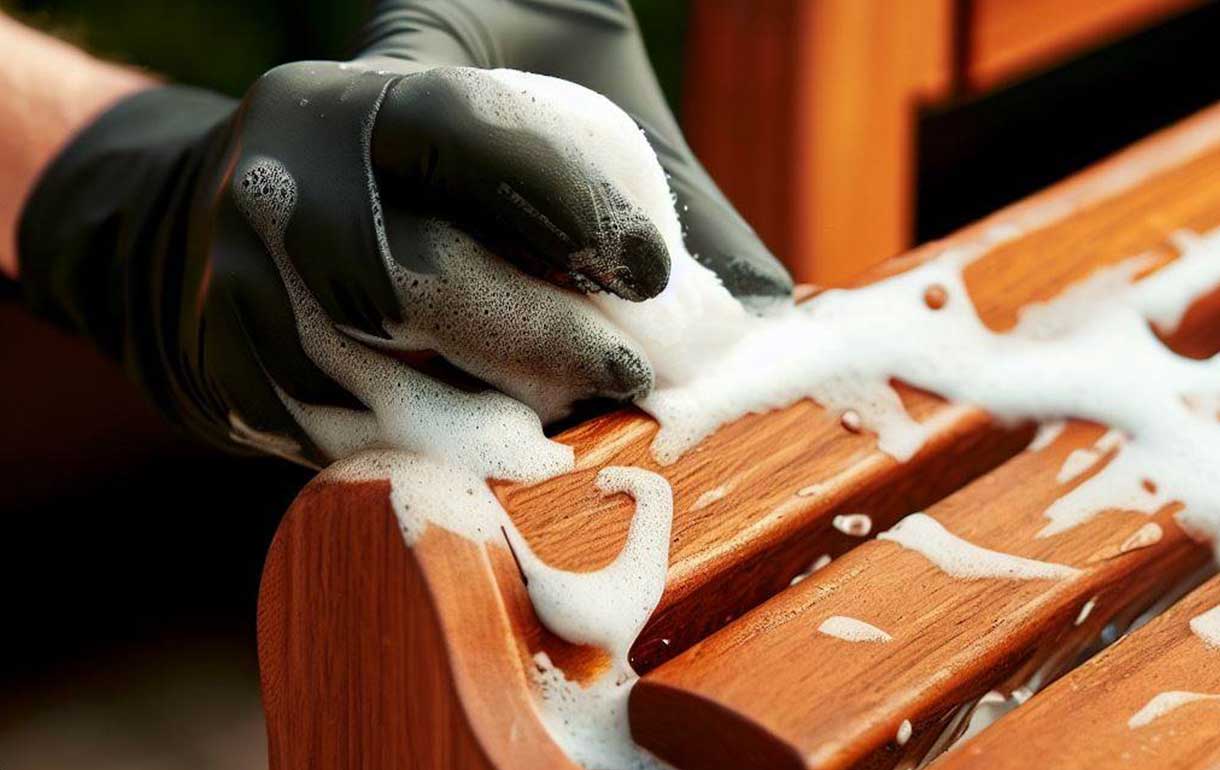
There are also a number of cleaning solutions specifically designed for cleaning wood that are formulated to not only clean but also feed the wood.
Whatever solution you choose to clean your wooden garden furniture, it’s important to rinse with a hose and leave the furniture to dry naturally - in direct sunlight if possible.
Sanding and Refinishing Wooden Furniture
Once you’ve removed any excess dirt and debris, you might want to sand down the wood.
This isn’t essential but it does help to smooth out and rebalance the surface ready for you to apply protective treatments, such as wood oils, at a later stage. You can sand wooden furniture using sandpaper or an orbital sander. (Make sure to wear safety goggles when doing this in order to prevent any fragments of wood from getting in your eyes.)
After sanding the wood, you need to treat it by applying an oil or wax - especially pine or oak garden furniture. This acts as a nourishing protective layer, lengthening its life and enhancing the appearance. It can also act as a water repellent, helping to prevent swelling and rot.
Some of the best oils for protecting wooden furniture are linseed oil, hemp oil and teak all. All of these will provide year-round protection and help enhance the appearance of the grain, they can also help reduce the chances of the wood splitting and warping.
Just rub the oil gently into the surface of the wood with an old cotton cloth, following the grain, and allowing each coat to dry thoroughly before applying the next.
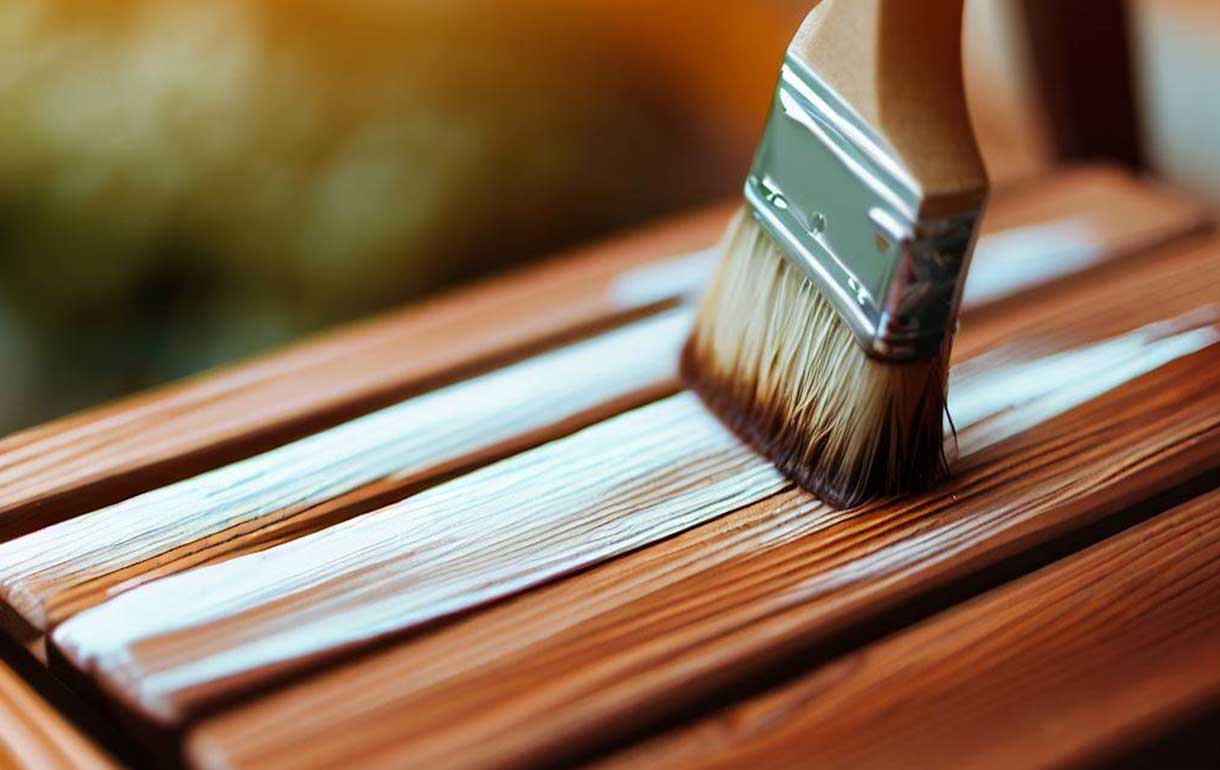
Tips for Adding Colour to Wooden Furniture
An alternative to staining your wooden garden furniture is to paint it, adding an extra layer of protection while giving it a whole new look.
You should use good quality paint designed for wood and suitable for outdoor use. The best type of paints for outdoor wooden furniture are water-based such as acrylic and latex, however acrylic paint does contain more chemicals.
Several thin coats of this type of paint are better than one thick one. Thin coats take less time to dry, allow you to retain the grain of the wood, produce a harder finish and just look so much better.
Protecting Wooden Furniture From the Elements
Giving your wooden garden furniture a good clean a couple of times a year then painting or oiling will keep it in great condition. We would recommend doing this just before the colder weather sets in and then again in the springtime, ready for use in the warmer months.
Protective furniture covers can be used for wooden furniture, however we would recommend removing the covers semi-frequently to allow it to “breathe” and to take in some sunlight. This can help reduce trapped moisture and the chances of rot.
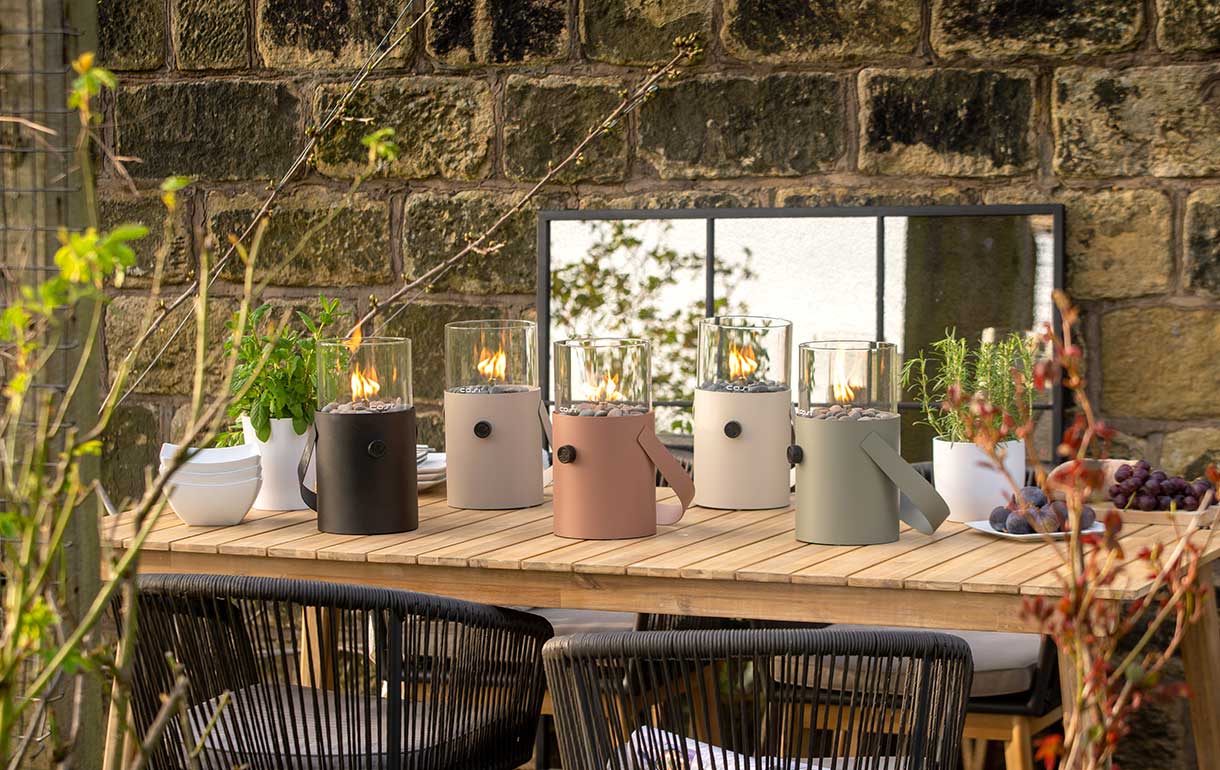
Adding Colour & Accessories to Your Garden Furniture
Add outdoor scatter cushions and throws for colour and comfort. Outdoor rugs can also help soften your patio area and make it feel like a proper cosy living space. Not only that, they can be very useful for keeping the floor under foot warmer as the evening rolls in.
With so many garden accessories to choose from, you could work to a theme or create a wonderful mish-mash of colours and patterns.
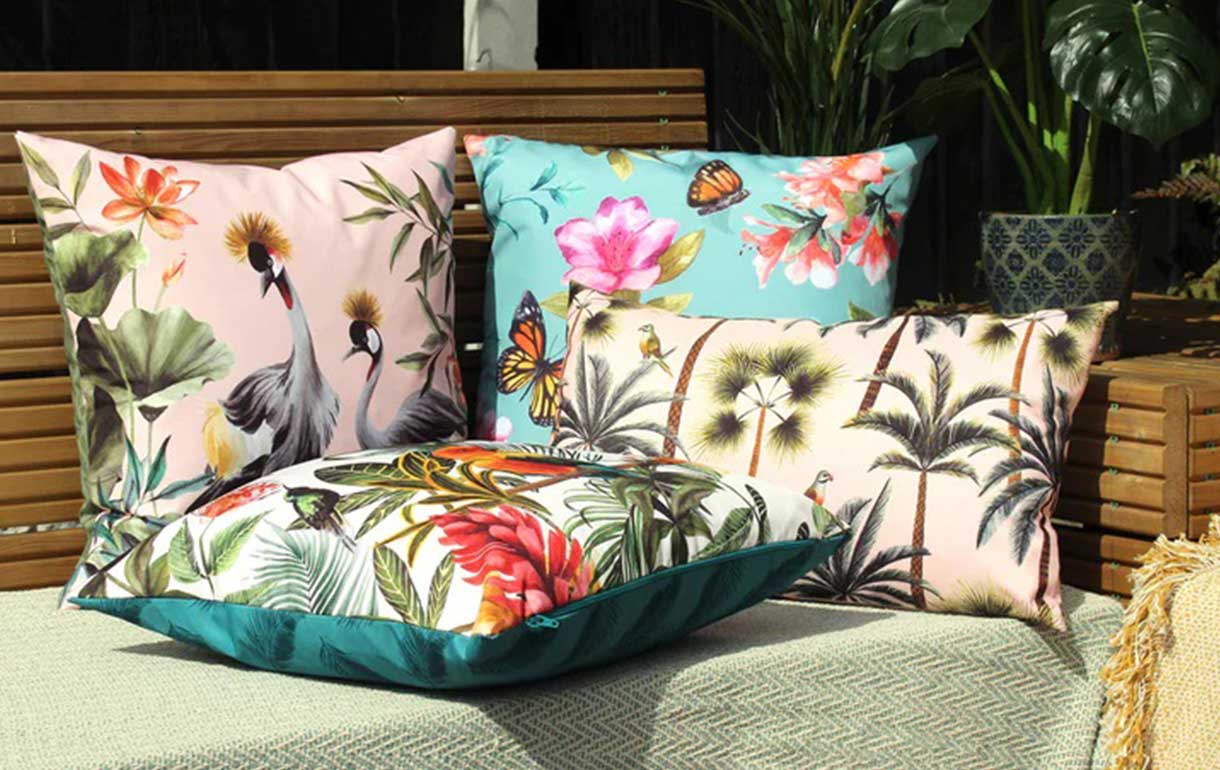
Be sure to look after your soft furnishings so they are as good as new when summer swings round.
Most soft furnishings designed for outdoor use are made from waterproof material, much like outdoor furniture cushions. These materials aren’t suitable for machine washing, so it’s important to check for food and general stains, then clean them straight away according to the manufacturer's instructions before storing them.
Prepping Your Garden Furniture Ready for Summer
Whatever the type of garden furniture you have, a few simple checks and a bit of a spring clean really can make all the difference. These are our 3 golden rules for all garden furniture:
1. Regularly checking for food and drink spillage will help reduce the task of mould and mildew when stored away at the end of the summer
2. Be mindful of how you use the furniture: coasters and place mats on tables, cushions on seats, and lifting your furniture by its framework rather than dragging it
3. Gentle cleaning is better than vigorous cleaning.
And this is your garden furniture cleaning equipment list:
• Vacuum cleaner with various fittings
• Bowl of soapy water – no bleach or abrasive substances, just mild detergent
• Garden hose (low water pressure, no pressure washers)
• Soft bristle brush, sponge and drying cloths
• Vinegar and wax polish or sanding equipment and wood oil/suitable paint
No matter what type you choose, if you look after your garden furniture, it’ll reward you year-after-year - especially if you’ve invested in a really good quality set!
—-----------------------
We hope you’ve found our tips on how to get garden furniture ready for summer useful! If however you need any further help or advice, or you have a question about a particular product, don’t hesitate to get in touch with our friendly, knowledgeable team!
-------------------------
Further Reading:
How to Make the Most of a Garden in a Rental Property
7 Essential Things you Need to Host the Perfect Summer Garden Party
Choosing Sustainable Garden Furniture
About the Author

Chloe Shaw is a Garden Furniture & Conservatory Furniture Specialist with many years of experience working at JB Furniture. Chloe combines her deep knowledge of garden furniture trends with her talent for creating engaging and informative content. She loves sharing inspiration, design tips, and product insights to help readers transform their gardens and conservatories into beautiful and inviting retreats.












Login and Registration Form